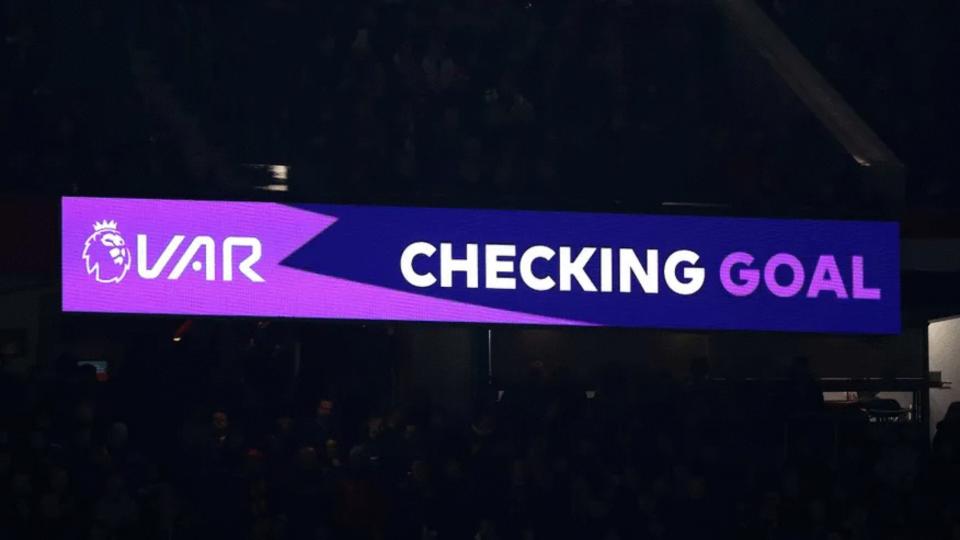For years, football fans were clamouring for the introduction of some form of video referee that would oversee the decisions made by the on-field referee and ensure that most mistakes would be corrected.
However, instead of clearing the controversy, the introduction of that technology has simply added to it. Some fans are happy it changes incorrect decisions, but many others believe it takes too long to come to a decision, takes away from the natural celebrations and emotions, and still sometimes makes errors.
It appears that like it or not, VAR (video assistant referee) has become commonplace in many aspects of football both in domestic leagues and on the international stage.
MORE: Complete 2023 Women’s World Cup match schedule
The Sporting News studies whether VAR will be present at the 2023 Women’s World Cup, and what role it will play at the tournament.
Will VAR be at the 2023 Women’s World Cup?
FIFA have confirmed that VAR will be present at all 64 matches of the 2023 Women’s World Cup.
VAR was written into the laws of the game in 2018, and was first used at a major FIFA tournament at the 2018 men’s World Cup in Russia, with FIFA then deciding to implement it at the Women’s World Cup a year later.
It didn’t come without controversy, with Cameroon protesting the VAR officials in their round of 16 loss against England made two crucial errors that helped England to a 3-0 win. Cameroon were also roundly criticised for their conduct in the match, where they refused to kick off for three minutes after an England goal as well as making a series of deliberate fouls and an allegation of a Cameroonian player spitting at an English player.
This hasn’t stopped its continued use at FIFA and other continental tournaments since, with the 2022 World Cup also featuring VAR.
How does VAR work?
There are two VAR officials on duty, with the main VAR official reviewing all decisions made by the on-field referee, and the assistant VAR (AVAR) watching the live action on the field while the VAR is undertaking a “check” or a “review”, to keep a record of reviewable incidents, and to communicate the outcome of a review to broadcasters.
VAR is designed to overturn ‘clear and obvious errors’, which include incidents in the build up to a goal, potential penalty incidents, or incidences of foul play requiring the referee to issue a red card to a player.
Often the on-field referee will pause play and hold their hand to an earpiece to indicate they in discussion with the VAR, and if they feel they want to review the decision further, they can go to a pitch-side monitor that can replay the incident from multiple angles and in slow motion.
Despite being in constant dialogue with the VAR, the final decision ultimately rests with the on-field referee, with the VAR being unable to directly overrule a decision made on the pitch.
Can fans hear the VAR speak?
Video review is not unique to football, in fact sports such as rugby union and cricket have implemented their own versions of the technology for years.
One different aspect of the rugby union and cricket video assistants is the fact spectators at home and in the ground can listen to the decisions being made in real time and the reasoning behind them; this has not been implemented in football, meaning many fans are frustrated by not knowing what is occurring during a VAR check and not knowing why a certain decision has been made.
However this could be set to change at this Women’s World Cup, with Forbes reporting on-pitch live communication is likely to be used, meaning for the first time at a major tournament, fans will be able to get insight into how the decisions in the VAR booth are made.
Chairman of the FIFA’s Referees Committee Pierluigi Collina said, “we decided to have this trial because we received some requests to make the decision taken by the referee after a VAR intervention more understandable for all the football stakeholders, namely the spectators at the stadium, or in front of the television”.

List of VAR officials at 2023 Women’s World Cup
There will be 19 video assistant referees at the 2023 Women’s World Cup in Australia and New Zealand.
For the first time at a Women’s World Cup, there will be six female video assistant referees.
| Video assistant referee | Country |
|---|---|
| Abdulla Al-Marri | Qatar |
| Chris Beath | Australia |
| Muhammed Taqi | Singapore |
| Carol Anne Chenard | Canada |
| Drew Fischer | Canada |
| Tatiana Guzman | Nicaragua |
| Armando Villarreal | USA |
| Salome Di Iorio | Argentina |
| Nicolas Gallo | Colombia |
| Daiane Muniz dos Santos | Brazil |
| Juan Soto | Venezuela |
| Ella De Vries | Belgium |
| Marco Fritz | Germany |
| Alejandro Hernadez Hernandez | Spain |
| Massimiliano Irrati | Italy |
| Juan Martinez Munuera | Spain |
| Sian Massey-Ellis | England |
| Pol van Boekel | Netherlands |






